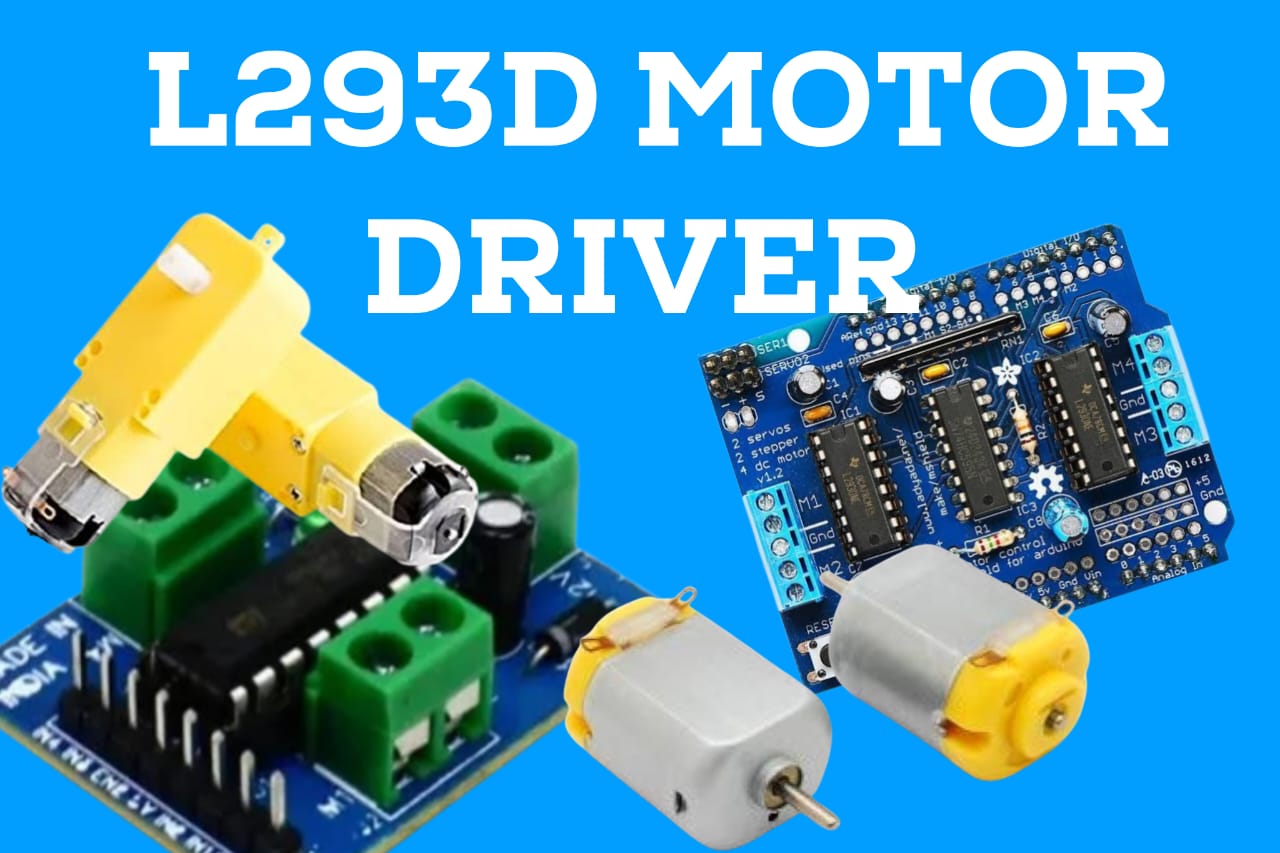L293D Motor Driver: Simple Guide for Students to Control Motors
The L293D motor driver is a small but powerful device that helps control the direction and speed of motors. It is often used in robotics and electronic projects. If you are a student learning about motors, the L293D motor driver is a great tool to start with. In this blog post, I’ll break down everything you need to know in simple language, so you can understand and use this motor driver in your projects.
What is an L293D Motor Driver?
The L293D motor driver is an integrated circuit (IC) that can control the direction and speed of two DC motors or one stepper motor. It works like a bridge between a low-power control system (like an Arduino or Raspberry Pi) and high-power motors.
| Feature | Description |
|---|---|
| IC Type | Dual H-Bridge Motor Driver |
| Motor Control | 2 DC Motors or 1 Stepper Motor |
| Operating Voltage | 4.5V to 36V |
| Current per Motor | 600mA (up to 1.2A peak per motor) |
| Control Inputs | Low-power signals from microcontrollers (e.g., Arduino) |
How Does the L293D Motor Driver Work?
The L293D motor driver works by allowing current to flow in two different directions, which makes the motor rotate forward or backward. This is called an H-Bridge configuration. The driver has four input pins to control the motors and four output pins connected to the motors.
Basic Functioning:
- Input Pins: Control the direction of the motor.
- Output Pins: Deliver the voltage to the motor.
- Enable Pins: Turn the motor ON or OFF.
- Power Supply Pins: Provide the required voltage to the motor.
| Pin Name | Function |
|---|---|
| IN1, IN2 | Controls Motor 1 Direction |
| IN3, IN4 | Controls Motor 2 Direction |
| EN1, EN2 | Enable/Disable Motors |
| OUT1, OUT2 | Connects to Motor 1 |
| OUT3, OUT4 | Connects to Motor 2 |
| VCC1 | Logic Voltage (5V for Arduino) |
| VCC2 | Motor Voltage (Depends on motor, up to 36V) |
Wiring Diagram for L293D Motor Driver
Here’s a simple wiring diagram that shows how to connect the L293D motor driver with two DC motors and an Arduino:
| Component | Connection to L293D |
|---|---|
| DC Motor 1 | OUT1, OUT2 |
| DC Motor 2 | OUT3, OUT4 |
| Power Supply | VCC2 (for motors), VCC1 (for logic) |
| Arduino Pins | IN1, IN2, IN3, IN4, EN1, EN2 |
How to Control the Motor Using L293D
You can control the motors using a microcontroller like Arduino by providing signals to the input pins (IN1, IN2, IN3, IN4) and the enable pins (EN1, EN2). By changing the signals to the input pins, you can control the direction and speed of the motors.
Example Code for Arduino:
int EN1 = 9; // Enable Motor 1
int IN1 = 8; // Input 1 for Motor 1
int IN2 = 7; // Input 2 for Motor 1
void setup() {
pinMode(EN1, OUTPUT);
pinMode(IN1, OUTPUT);
pinMode(IN2, OUTPUT);
}
void loop() {
// Motor 1 Forward
digitalWrite(EN1, HIGH);
digitalWrite(IN1, HIGH);
digitalWrite(IN2, LOW);
delay(2000);
// Motor 1 Backward
digitalWrite(EN1, HIGH);
digitalWrite(IN1, LOW);
digitalWrite(IN2, HIGH);
delay(2000);
// Motor 1 Stop
digitalWrite(EN1, LOW);
delay(2000);
}Why Use the L293D Motor Driver?
- Dual Motor Control: The L293D motor driver can control two motors simultaneously, which is great for robotics projects.
- Easy to Use: You can control the motor with simple ON/OFF commands from microcontrollers like Arduino or Raspberry Pi.
- Affordable: The L293D is inexpensive and widely available.
- Protection: The driver provides protection against back electromotive force (EMF) from the motors, preventing damage to your control circuit.
| Advantage | Explanation |
|---|---|
| Dual Motor Support | Control two motors at once |
| Simple Interface | Easily controlled by Arduino or other MCUs |
| Back EMF Protection | Protects microcontroller from motor spikes |
| Cost-Effective | Affordable and widely available |
Applications of L293D Motor Driver
The L293D motor driver is commonly used in a variety of projects:
- Robotics: It is perfect for driving wheels and controlling robot arms.
- DIY Electronics: Use it in projects like motorized toys, automated doors, and more.
- Educational Projects: A great learning tool for understanding motor control and electronics.
| Project Type | Example |
|---|---|
| Robotics | Motor control for wheels and arms |
| Automated Systems | Control motors in doors, windows, and more |
| DIY Projects | Motorized toys, moving displays, etc. |
Frequently Asked Questions (FAQs)
Q: Can I control a stepper motor using L293D?
A: Yes, the L293D motor driver can control one stepper motor by connecting both sides of the IC to different windings of the motor.
Q: What is the maximum current the L293D can handle?
A: The L293D can handle up to 600mA of current per motor and up to 1.2A peak for short durations.
Q: Do I need an external power supply for the motors?
A: Yes, the motors usually require more power than what a microcontroller can supply, so an external power source is needed for VCC2.
Conclusion
The L293D motor driver is a great tool for students and beginners in electronics and robotics. It allows you to control the speed and direction of DC motors easily using a microcontroller. Its simplicity, dual-motor control, and protection features make it ideal for school projects and DIY robotics.
By understanding how to wire and program the L293D, you can build exciting projects, from simple motorized toys to more complex robotic systems. Whether you’re a student or hobbyist, the L293D motor driver is a must-have component in your toolkit.
By following this guide, you can confidently use the L293D motor driver in your next project. Happy learning!
